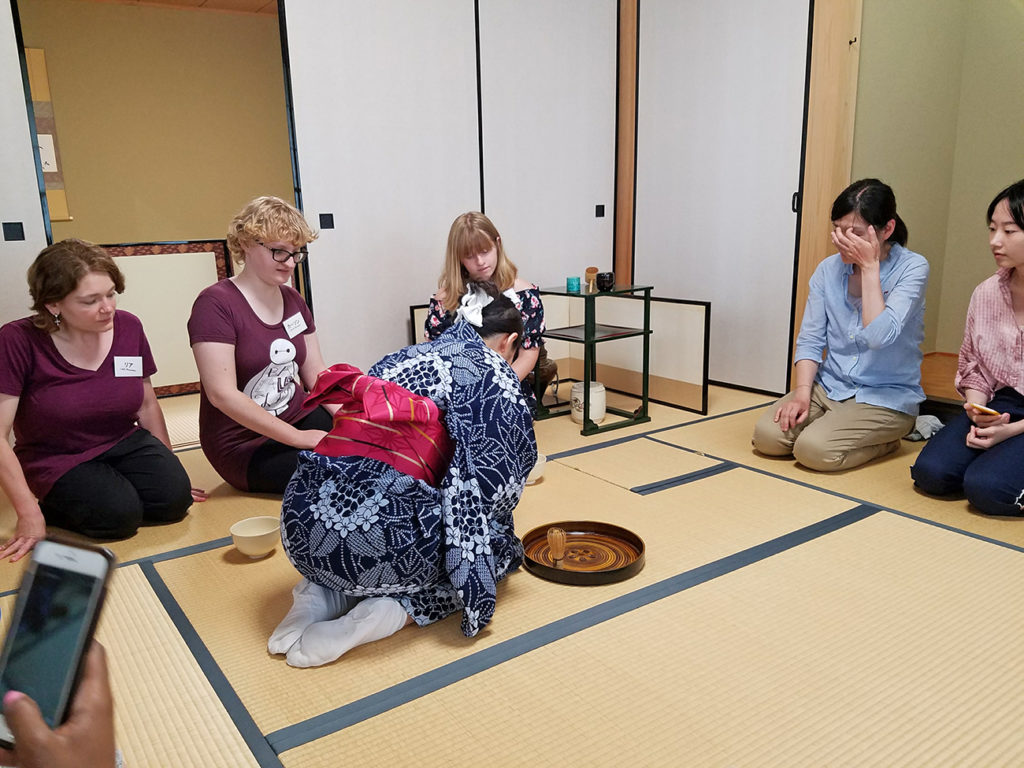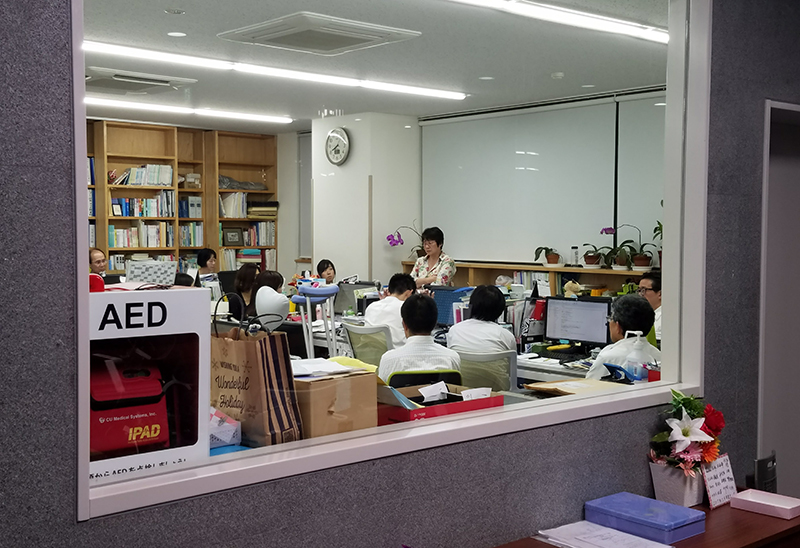
Summer Short alum Won Young Choi on KCP and Japan (Part 2)
In this second part of a 2-part post, Summer Short-term 2018 alum Won Young Choi reveals to us a closer look at the program and shares tips on studying. Thanks for sharing!
Depending on what level you are, you will either be placed in a morning (9am – 12:15pm) or afternoon block (same time) for the next six weeks. Those six weeks constitute half of a KCP semester, so you will only end up learning half of what is covered in that level (which is why I have thoughts of attending KCP again in the future). If you choose to engage in a student-run activity like manga or koto club, it will have to be during the 75 minutes break between the two blocks. One of my big regrets is not joining a club as it’s an excellent way to communicate with other students outside of class.
A snap of a Japanese tea ceremony. Did you know KCP has a Japanese washitsu dedicated to Tea Ceremonies on the 7th floor?
You will also be taught by three different sensei throughout the course of a week. You’ll realize that every sensei has their own specific soft spot about the Japanese language that they want to emphasize in their teaching; one may emphasize pronunciation, while another may emphasize peer-to-peer conversation or accuracy of Kanji strokes. I found these idiosyncrasies to be helpful to make the most out of their Japanese expertise.
Another pro tip: do your homework (usually a combination of Kanji writing, textbook questions, and written prose), and do it well. Also take advantage of sensei office hours, whose times differ by level. I mainly did my homework in the KCP building after class so that I could consult them with any questions that popped up during work. I don’t think any teacher is as enthusiastic to provide their assistance as KCP sensei, and when they’re able to sense your energy to work hard, they’ll reflect it many times fold. Homework also preps you for quizzes, which constitute a bulk of your grade.
I was in the middle of doing homework when one of the KCP leaders was holding a meeting with the senseis. At 8pm. If they have the energy to invest in your education past the sunset, you also have the energy to make it worth your and their while.
Hopefully when you start your own KCP adventure, what I’ve shared may have enlightened your way into Japanese nirvana. Just don’t forget to abide by KCP’s common rule of thumb for success: study about 4-6 hours a day outside of class.
Read Part 1 here!


